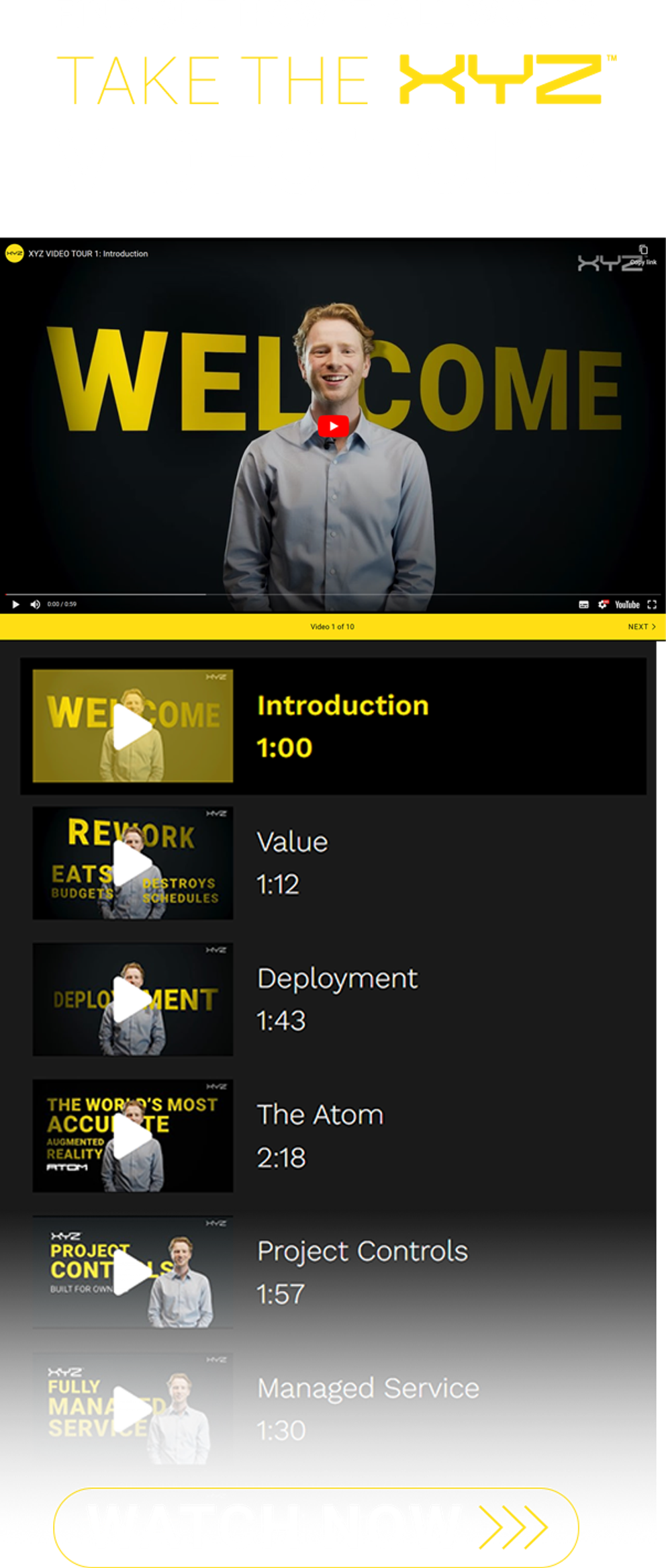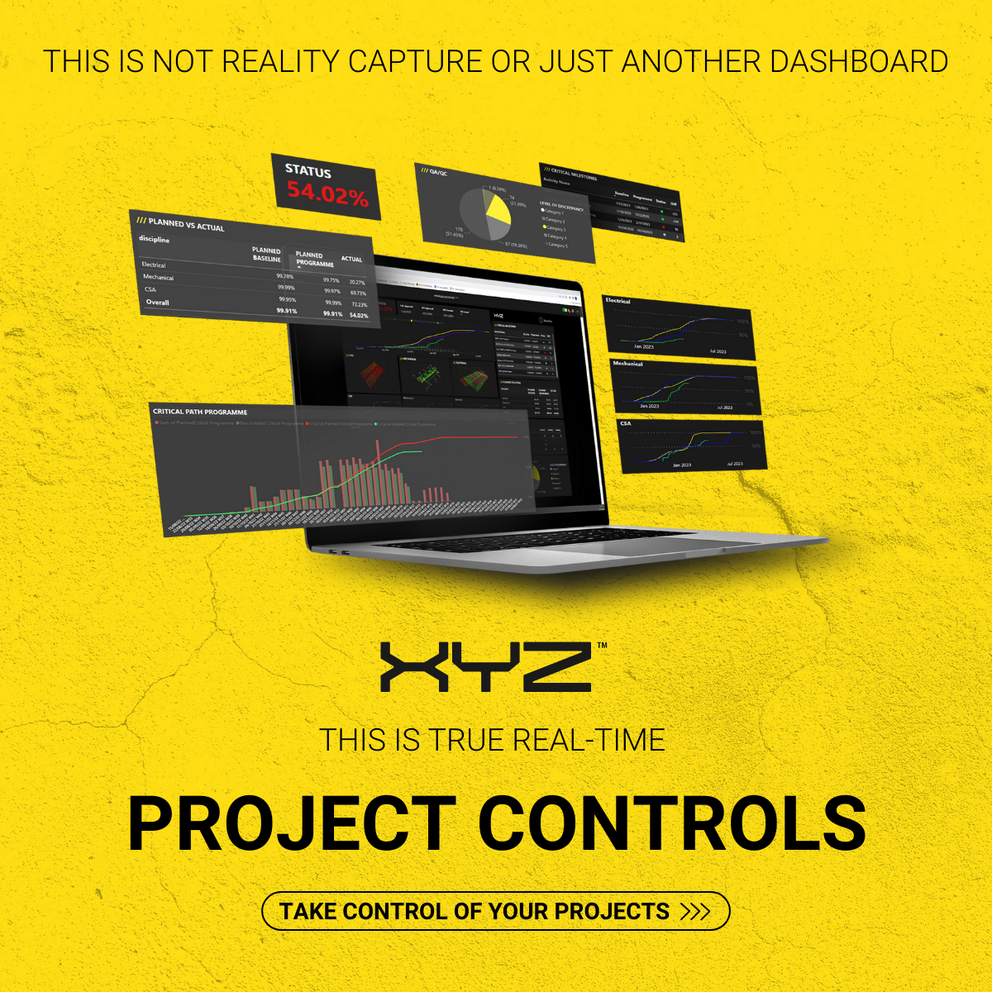-
Services
Services
Find out how we work with our clients and deliver value to construction projects from day one
-
Solutions
Solutions
Discover how all our solutions sync together to deliver construction's most powerful BIM platform to date
-
Built for
Built for
-
Industry
Industry
Understand how we support construction's biggest sectors, and hear from our clients who have experienced the power of XYZ
-
Resources
Resources
Get stuck into all our latest thought leadership, news, reports and industry leading content
-
Company
Company
Dive into what makes XYZ tick, unearth why construction is in our DNA and why we are world leaders in AR solutions

Insights
Developing purpose-built AR technology for the construction industry

02 February 2023
Today we offer a brief account of the technological and process innovations throughout construction history, as well as discuss the evolution of the Atom, our Engineering Grade augmented reality headset, and how it came to solve one of the industry’s most pressing problems.
For over 4,000 years, construction has utilized 2D drawings, a process that, to the disbelief of many of us, is still in use today. Yes, the construction industry has come a long way in pushing technology forward with the introduction of CAD, 3D models and BIM – with the global BIM market size expected to grow to US$ 52.5 billion by 2030 – but yet tech adoption rates remain slow.
What is holding the industry back?
The construction industry has always been resistant to change, and in its defense, there has been a distinct lack of technology built solely for construction; in the past, technologies had to be retrofitted to work to the industry’s specific demands.
The impact of this reluctance to change and lack of purpose-built tech is partially responsible for the industry’s general inefficiency problem and why profit margins remain at a slight 4%.
To start, assets are designed in 3D, converted to 2D drawings, then built in 3D, and the validation happens after the build. This is a highly reactive process which leads to $1 trillion in waste globally per year.
XYZ Reality: single-minded about construction
With the introduction of our purpose-built Engineering Grade AR™ headset, the Atom™, we set a new standard in construction technology, in efficiency, in accuracy.
We want to offer an overview today of the Atom’s origins, its transformation from a concept to a cutting-edge field-ready solution. But first, for context’s sake, let us explore the construction technologies and processes that came before so we can place it on the historical timescale.
A brief history of construction processes
Some of the oldest examples of “construction drawings” date back to 2,200 B.C., in Mesopotamia. The renderings of course evolved and improved over the next four millennia to take into consideration more detail, color and greater accuracy, but for thousands of years they have dominated as construction’s central build tool.
If we jump forward to the 1980s and 1990s, AutoCAD’s arrival brought 2D digital drawings into existence. This marked a huge step forward for designers, engineers and construction professionals.
At this same time, the world also witnessed the birth of 3D CAD platforms in engineering. The construction industry, however, lagged behind, remaining staunchly devoted to 2D processes.
Laser scanning also gained popularity with engineers in the 1990s. A methodology which originated in the 1960s, enabling build validation through utilizing laser light to capture the details of an asset.
Due to a lack of purpose-built advancements, construction tech stalled in the first decade of the 2000s. The proliferation of global cloud platforms in 2012 - 2015, along with improvements in mobile camera technology, enabled the access of 2D drawings in the field.
Finally, a solution the construction industry could use.
Another crucial milestone was the appearance of BIM (building information modeling). Its rapid adoption – demonstrated by the fact that in 2007, only 27% of construction utilized BIM; in 2012, the usage shot up to 71% – paved the way for further technological advancements. The UK and the United States are currently the recognized global leaders in BIM adoption, with France, Germany and Scandinavia also rapidly increasing their utilization rates.
Augmented reality as a solution
With the arrival of Google Glass in 2013, the first augmented reality (AR) device, the possibility of broad AR utilization across a range of industries became a reality.
Another significant step forward in the technology came with Microsoft’s introduction of the HoloLens in 2016. It was a successful commercial product, but just not purpose-built for the construction environment, incapable of achieving the level of accuracy required onsite, suffering from drift and the inability to load large models.
The Atom™ was born
From our earliest development stage, our goal in creating the Atom, our Engineering Grade AR™ headset, was to supply the industry with an innovative technology built for nothing but construction.
Customer feedback was key. We asked potential customers what they needed and proceeded from there; we wanted to solve the right problems from the beginning.
One significant industry problem that the Atom addresses is accuracy. It allows construction teams to position holograms of 3D models to millimeter accuracy onsite – competing solutions simply can’t reach this kind of precision.
The Atom also solves the transparency issue. By giving synergy to your BIM model, it ensures a steady flow of information from the site to your offices, keeping everybody working together on the most up-to-date iteration.
With its AR displays and powerful in-built computing capabilities, the Atom enables your teams to literally see where installations belong. This enables real-time validation – unlike the reactive processes of the past – and allows you to identify errors before they turn into costly rework.
The Atom - the next step in construction tech
Industry technology has come a long way. And with the arrival of the Atom, contractors now possess their very own purpose-built tool to eliminate the inaccuracy and inefficiency problems of the past.
The Atom is the only Engineering Grade AR solution. It ensures that you can deliver projects on time and within budget. It gives confidence to teams and provides demonstrable return on investment. It allows you to build with millimeter accuracy and complete transparency, preventing rework.
In other words, it allows you to build it right, first time, every time.
To learn more about the Atom and its evolution from concept to reality, watch this webinar on demand, “Developing innovative AR technology fit for the construction industry”.








